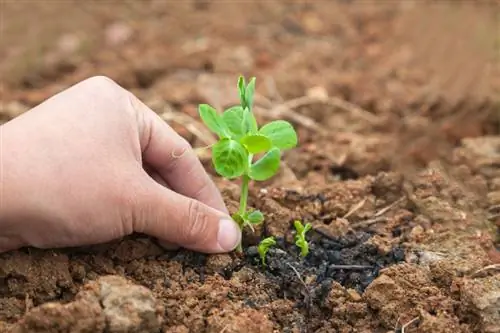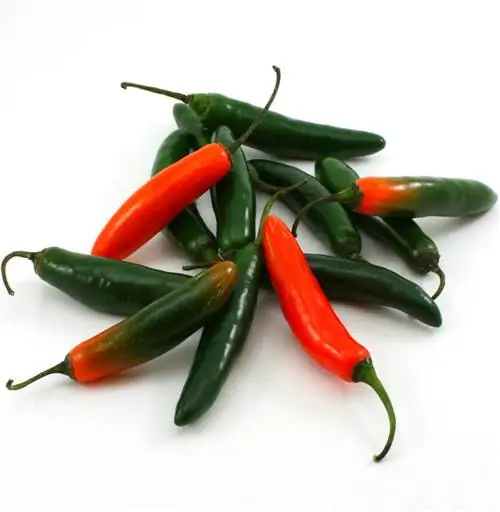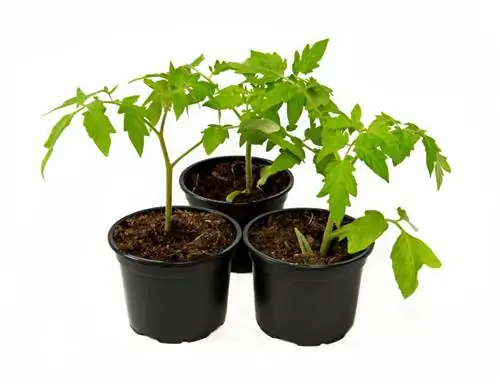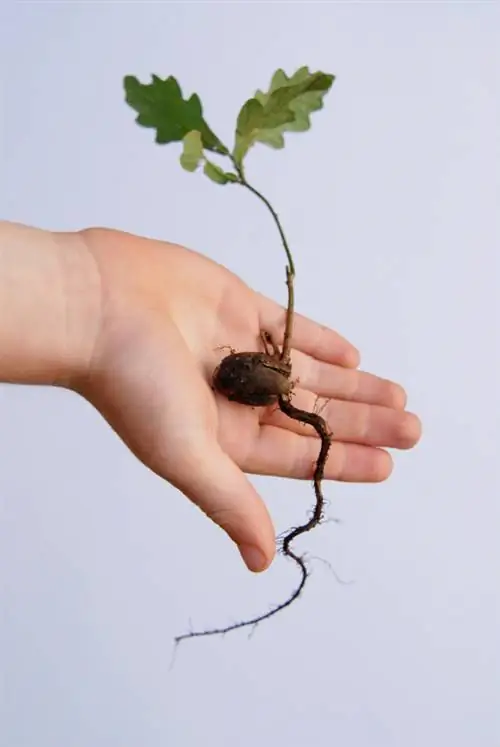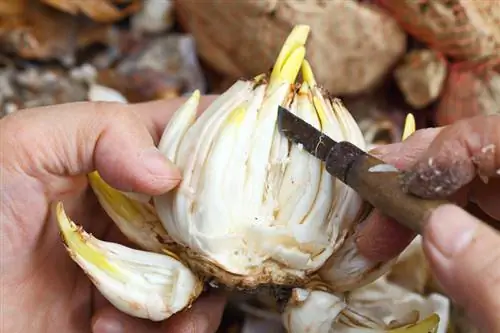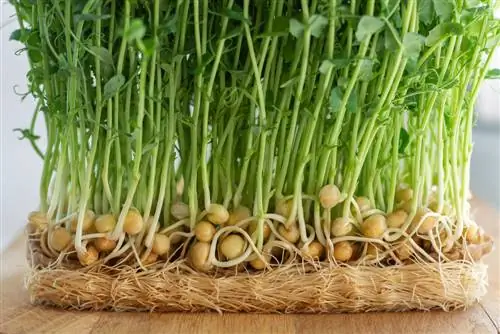- Author admin [email protected].
- Public 2023-12-16 16:46.
- Last modified 2025-01-23 11:19.
Peas have long since given up their reputation as poor people's food. Even vegetable-resistant children eat heartily. It is impossible to imagine a modern garden without tender legumes. Comprehensible instructions show how uncomplicated cultivation can flourish.

How to successfully plant peas in the garden?
Planting peas is best done in a sunny to semi-shady location, with nutrient-rich, humus-rich, slightly calcareous soil and a pH value of 6.0-8.0. Pale peas are sown directly in March, as are maroon peas and sugar peas in April, with row spacing of 40 cm and sowing depth of 5-6 cm.
Which types of peas thrive in the home vegetable garden?
Various varieties are based on 3 types of peas. Frost-tolerant pale peas, the ideal dry peas, are ideal for early cultivation. Mid-early peas are eaten fresh. They score points with their mild, sweet aroma. The unbeatable favorite for children are the tender sugar peas, which taste great with the pod included.
Which site conditions need to be taken into account?
Peas grow in any good garden soil. Ideally you will find the following conditions there:
- sunny to semi-shady location
- nutrient-rich soil, humus, fresh and slightly calcareous
- an average pH of 6.0-8.0
No peas or other legumes must have been cultivated there in the previous 3 years.
When are peas sown?
The sowing dates are closely linked to the type of pea to which your favorite variety belongs. The cold-resistant pale peas can be planted in the bed from early to mid-March. Peas and sugar peas will follow in mid-April.
Is it worth preferring peas?
Growing behind glass is rewarded with a harvest approx. 3 weeks earlier. In February the seeds are sown in trays with potting soil (€6.00 on Amazon). The germination temperature is a low 5 degrees Celsius. From a height of 8-10 cm it goes out into the bed.
What values apply for planting distance and sowing depth?
Direct sowing in the garden requires a row spacing of 40 cm. However, the climbing aids should not be set up further than 20 cm. Place the individual seeds 3-4 cm apart. To protect against voracious pests, the sowing depth fluctuates around 5-6 cm.
What crop rotation determines the cultivation of peas?
As a rule of thumb, all legumes or butterflies are incompatible with themselves. Unfavorable neighbors are therefore beans, tomatoes, spinach, peppers, garlic, onions and leeks.
Suitable neighbors are carrots, cucumbers, lettuce, kale, kohlrabi, lemon balm, zucchini, sage, celery and mustard.
According to which instructions should trellises be constructed?
There is a wide range of scope when it comes to a climbing aid for peas. As long as it is a stable construction that protects peas from wind, you are free to choose the construction method you choose.
Instead of following instructions, just let your crafting imagination run wild. For example, nail wooden rods together to form a rectangle and stretch sisal between them. Your peas will climb up it as much as they can.
When is harvest time for peas?
Peas take between 3 and 4 months to mature. The earlier you harvest, the more tender and sweet the seeds taste. This applies in particular to marsh peas and sugar peas.
Pale peas, which are mainly dried, remain in the bed longer. Only when the pods appear plump and firm are they mature.
Tips & Tricks
An optimal starting point for growing peas in the garden is to prepare the bed in the previous year. If you enrich the soil with a well-measured portion of garden compost in autumn, the plants will thank you with vigorous, rapid growth.

